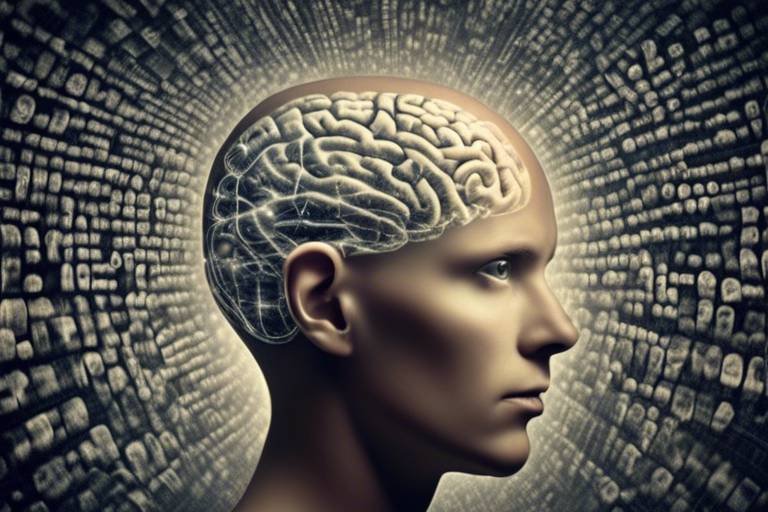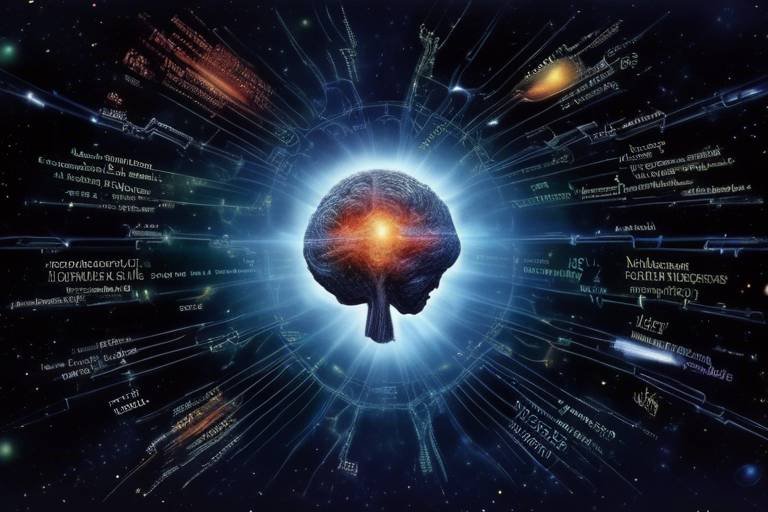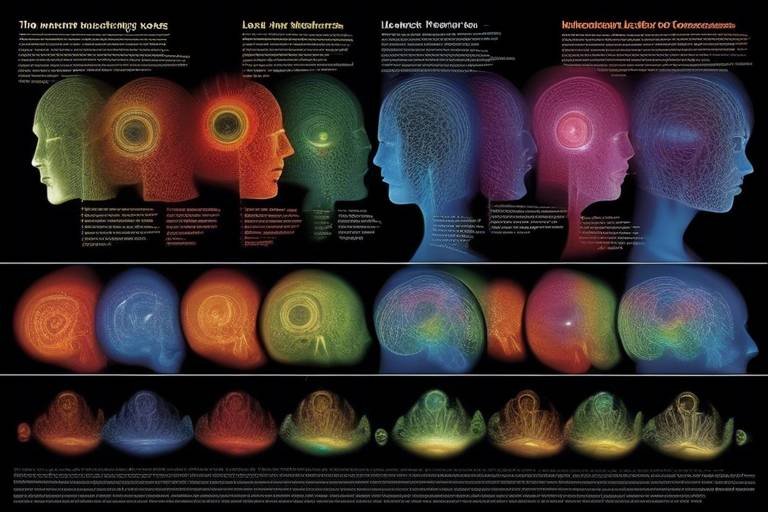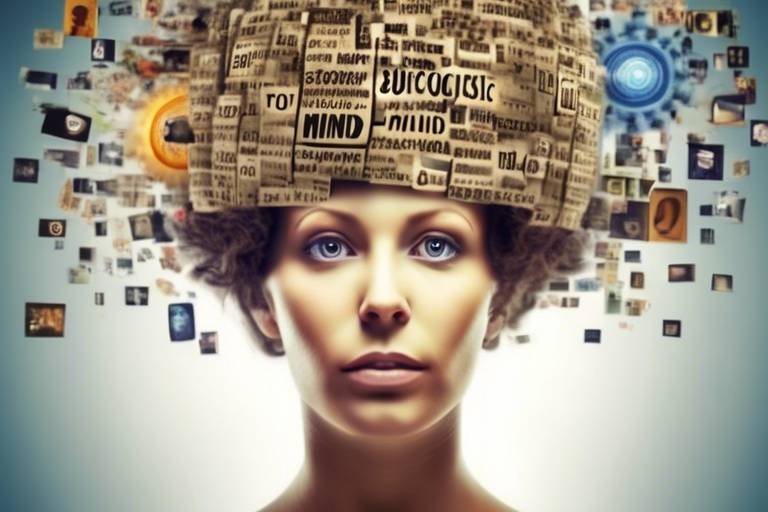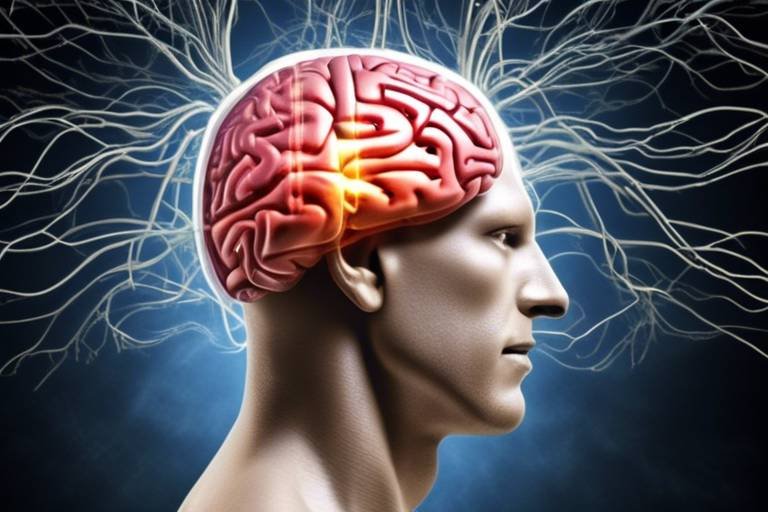Human Memory - A Function of Consciousness or Brain?
Memory is one of the most fascinating aspects of the human experience, intertwining the intricate workings of our brain with the enigmatic nature of consciousness. Have you ever wondered why you can recall a childhood memory with such vivid detail while struggling to remember where you left your keys? This paradox highlights the complexity of memory and raises the question: is memory merely a function of our brain, or does consciousness play a pivotal role in shaping our memories? In this article, we will explore the intricate relationship between these elements and how they interact to form our understanding of memory.
At its core, memory can be defined as the mental faculty that allows us to encode, store, and retrieve information. It's not just a passive repository of experiences; rather, it's an active process that influences our daily lives, decisions, and even our identities. The interplay between consciousness and the brain is crucial in understanding how we form and recall memories, as both elements contribute to our cognitive processes in unique ways. For instance, when we consciously focus on an event, we are more likely to encode it into our long-term memory. This relationship suggests that consciousness is not just a bystander but an active participant in the memory formation process.
To fully grasp the significance of memory, we must first understand its various types. Memory is typically categorized into short-term and long-term memory. Short-term memory, often referred to as working memory, allows us to hold information temporarily for immediate tasks, such as remembering a phone number long enough to dial it. In contrast, long-term memory encompasses the vast reservoir of knowledge and experiences that we accumulate over time. This distinction is crucial, as it influences our daily experiences and learning processes. For example, when studying for an exam, the ability to transfer information from short-term to long-term memory is essential for retention and recall.
In summary, the relationship between human memory, consciousness, and the brain is a complex and dynamic one. As we delve deeper into the nature of memory, we will uncover how attention, the types of memory, and the neurological underpinnings all contribute to our understanding of this essential cognitive function. By exploring these elements, we can better appreciate the profound impact that memory has on our lives and the intricate ways in which our brain and consciousness work together to shape our experiences.
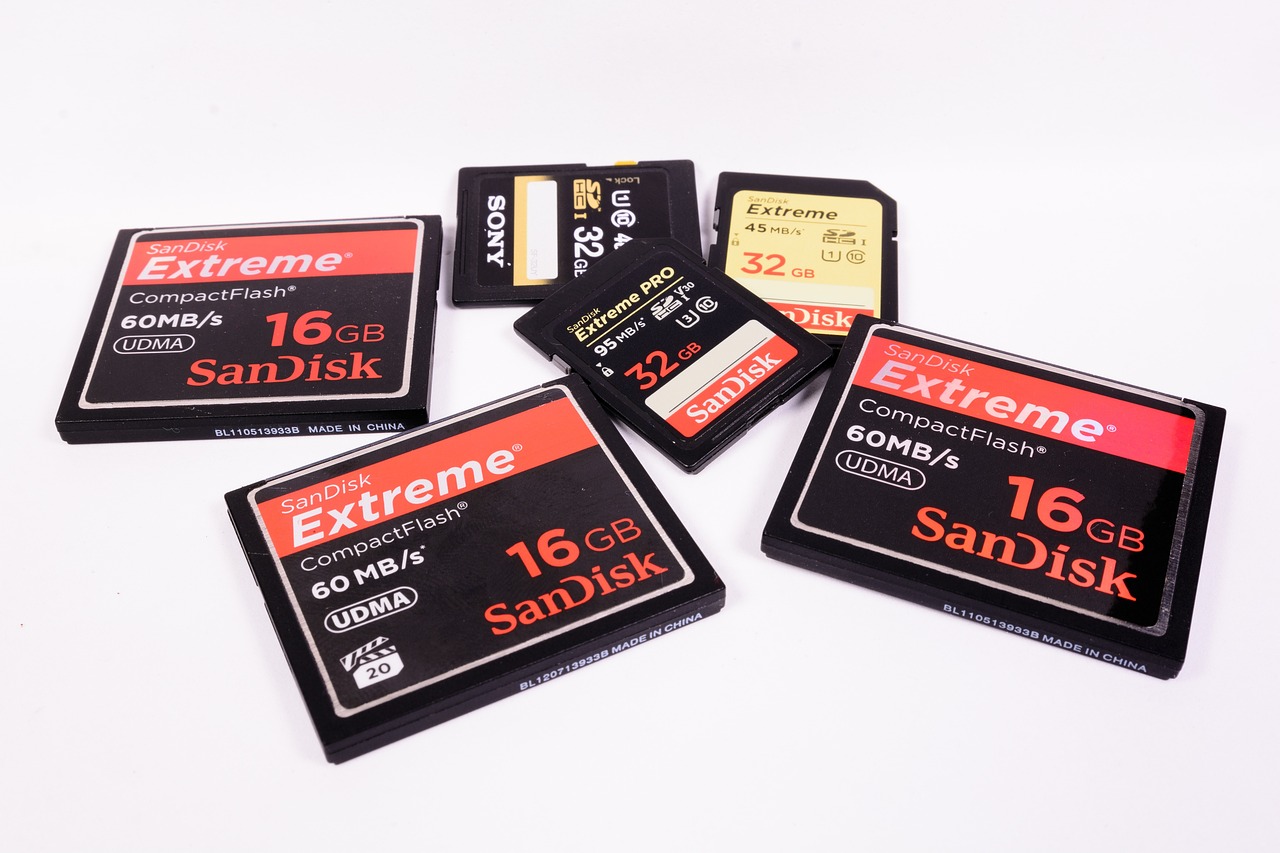
The Nature of Memory
Understanding memory is like peeling an onion; each layer reveals something new and complex about how we store, retrieve, and utilize information in our daily lives. Memory isn't just a single entity; it's a multifaceted phenomenon that can be categorized into different types. The two primary classifications are short-term memory and long-term memory, both of which play crucial roles in our experiences and learning processes.
Short-term memory, often referred to as working memory, is like a mental scratchpad. It allows us to hold onto information temporarily, enabling us to perform tasks such as solving problems or following conversations. For instance, when someone gives you a phone number, you might repeat it in your mind until you can write it down. However, this information is fleeting; without reinforcement, it can vanish within seconds. On the other hand, long-term memory is where information is stored more permanently. This is where our cherished memories, skills, and knowledge reside, waiting to be accessed later. It’s akin to a vast library, with each book representing a unique experience or piece of information.
These categories of memory influence our daily experiences in profound ways. For example, when studying for an exam, you rely on your short-term memory to grasp concepts temporarily, while your long-term memory is essential for retaining that knowledge for future recall. The interplay between these two types of memory is critical; without effective encoding and retrieval mechanisms, our ability to learn and grow is significantly impaired.
Moreover, memory can be further divided into specific types, such as episodic memory, which involves recalling personal experiences; semantic memory, which pertains to facts and knowledge about the world; and procedural memory, which relates to skills and tasks we perform automatically. Each type serves a unique purpose, highlighting the intricacies of how we remember and learn.
In summary, the nature of memory is a complex interplay of different types and processes that affect our everyday lives. Understanding these dynamics can not only enhance our grasp of human cognition but also improve our learning strategies and retention techniques. As we delve deeper into the relationship between memory and consciousness, we begin to appreciate how these elements work together to shape our understanding of the world around us.
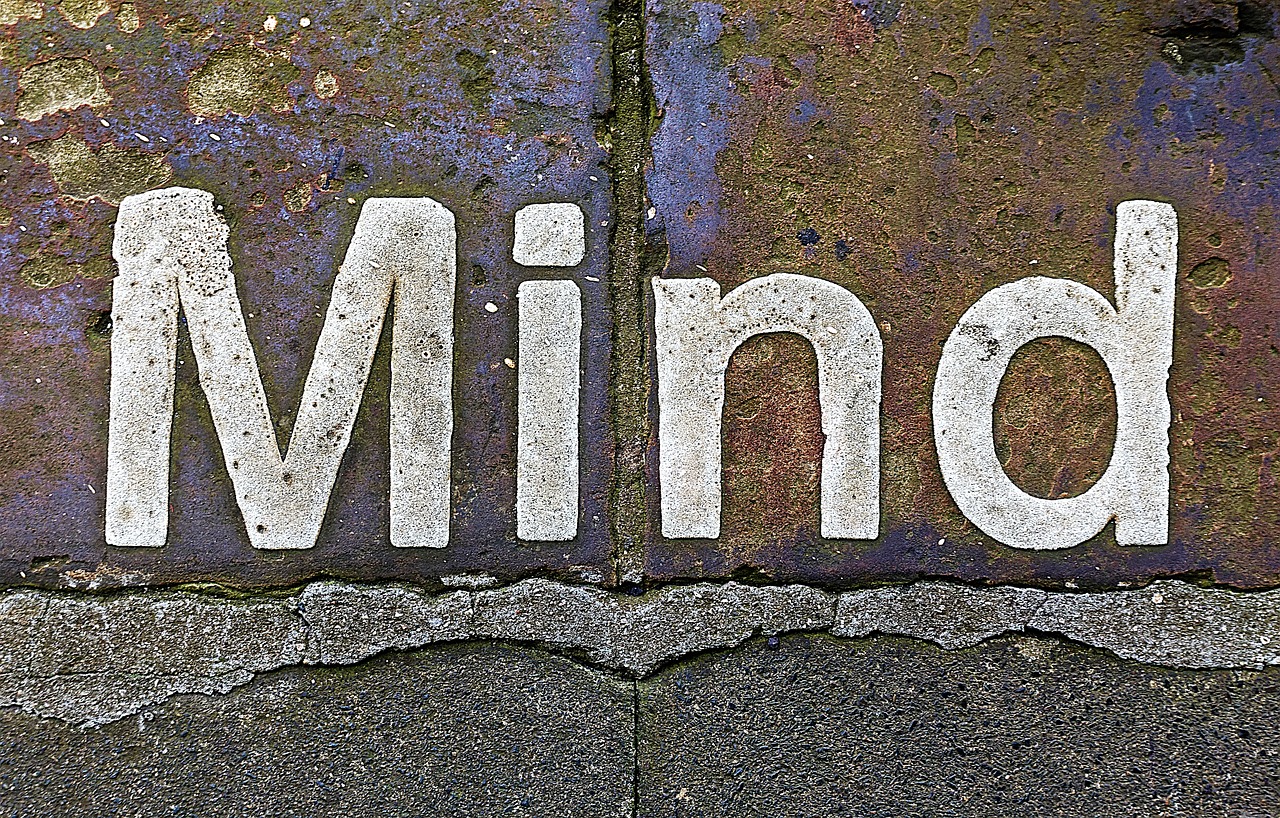
Consciousness and Memory
Have you ever wondered how a fleeting thought can become a lasting memory? The intricate dance between consciousness and memory is where the magic happens. Consciousness is like the spotlight on a stage, illuminating certain aspects of our experiences while leaving others in shadow. This spotlight is essential for memory formation, as it determines what we focus on and subsequently encode into our memory banks. Without this conscious attention, our ability to recall information later can be severely hindered.
When we talk about memory, we often think about it as a single entity, but it's actually a complex web of processes that involve various types of memory systems. Consciousness plays a pivotal role in determining which memories are formed and how they are accessed later. For instance, when you're deeply engaged in a conversation, your conscious mind is actively processing the information being shared. This level of engagement enhances your ability to remember the details later on, showcasing the profound impact of consciousness on memory.
But how does this process work? It all boils down to attention. Think of attention as the gatekeeper of memory. It decides what gets through to the memory storage and what gets filtered out. When we pay attention to something, we are more likely to remember it. Conversely, if our attention is divided—say, by scrolling through social media while trying to study—our memory formation suffers. This is because multitasking can lead to superficial processing of information, meaning that what we do manage to encode is often weak and easily forgotten.
Attention is not just about focusing on one thing; it can also take on different forms. For example, selective attention allows us to hone in on specific stimuli while ignoring distractions. This is crucial for memory performance. Imagine you're at a bustling coffee shop, trying to remember the details of a conversation with a friend. If you're focused solely on your friend, you're more likely to remember what was said. However, if your attention wavers—perhaps because of the loud music or the chatter around you—your memory of that conversation may not be as clear.
Selective attention can significantly enhance our memory recall. It allows us to filter out irrelevant information and concentrate on what truly matters. This is why, in educational settings, minimizing distractions can lead to better learning outcomes. When students focus on the lesson without interruptions, they are more likely to retain the information being presented.
On the flip side, divided attention can be detrimental. When we try to juggle multiple tasks at once, our brain struggles to process the information effectively. Research has shown that multitasking often results in lower memory retention. So, the next time you're tempted to check your phone while studying, remember that your brain might be paying the price.
In summary, the relationship between consciousness and memory is a fascinating one. Our conscious awareness shapes what we remember and how we retrieve those memories. By understanding this connection, we can develop strategies to enhance our memory capabilities, whether it's through focused attention, minimizing distractions, or employing effective memory techniques.
- How does consciousness affect memory?
Consciousness influences memory by determining what we pay attention to, which in turn affects what gets encoded and stored in our memory. - What is the impact of multitasking on memory?
Multitasking can impair memory formation, as it leads to superficial processing of information, making it harder to retain details. - Can improving attention enhance memory?
Yes, improving attention through focused practice can significantly enhance memory retention and recall.

The Role of Attention
Have you ever walked into a room and completely forgotten why you were there? This common experience often boils down to the role of attention in memory processing. Attention is like a spotlight, illuminating certain information while leaving the rest in the shadows. When we pay attention to something, we are actively engaging our cognitive resources, which is crucial for encoding memories effectively. Without this focus, information may slip through our mental fingers, leading to forgetfulness.
To understand how attention influences memory, let’s consider the different ways we can direct our attention. First, there's selective attention, which allows us to concentrate on specific stimuli while tuning out distractions. For instance, when you're at a noisy party and having a deep conversation with a friend, your brain is filtering out all the background noise to prioritize that dialogue. This focused attention enhances your ability to remember the details of the conversation later.
On the other hand, we have divided attention. This is what happens when we try to multitask—like texting while watching TV. While it may seem efficient, divided attention often leads to poorer memory retention. When you split your focus, you’re not fully engaging with any one task, resulting in a superficial processing of information. Studies show that multitasking can significantly impair our ability to remember things, as the brain struggles to juggle multiple inputs at once.
Moreover, attention is not just a one-time deal; it plays a vital role in the entire memory process. The initial encoding of information requires focused attention, while the retrieval phase often demands a similar level of concentration. For example, if you're trying to recall a friend's name but are distracted by your surroundings, you might find it nearly impossible to retrieve that memory. Thus, the connection between attention and memory is a dynamic interplay that shapes our daily experiences.
In summary, attention is an essential component of memory formation and retrieval. By understanding how attention works, we can implement strategies to enhance our memory capabilities. Whether it’s minimizing distractions or practicing mindfulness, improving our attention can lead to better memory retention and recall. So, the next time you find yourself forgetting something, ask yourself: was I truly paying attention?
- What is the difference between selective and divided attention?
Selective attention involves focusing on one specific stimulus while ignoring others, whereas divided attention refers to trying to pay attention to multiple stimuli at the same time. - How can I improve my attention span?
Techniques such as mindfulness meditation, regular breaks during tasks, and minimizing distractions can help improve your attention span. - Does attention affect all types of memory?
Yes, attention impacts various types of memory, including episodic, semantic, and procedural memory, as it is crucial for the encoding and retrieval processes.

Selective Attention
Selective attention is a fascinating cognitive process that enables us to focus on specific stimuli while filtering out distractions. Imagine you're at a bustling café, surrounded by the clinking of cups, chatter, and music. Yet, despite the chaos, you can engage in a deep conversation with a friend. This ability to hone in on one particular sound while ignoring the rest exemplifies selective attention in action. It’s like having a spotlight that illuminates only what you want to see, leaving everything else in the shadows. This process is crucial for memory performance and recall, as it determines what information gets encoded into our brains and how well we can retrieve it later.
The impact of selective attention on memory is profound. When we selectively attend to information, we enhance our ability to remember it later. For instance, if you're studying for an exam and you focus intently on the material, you're more likely to retain that information compared to when you're distracted by your phone or background noise. This is because selective attention helps to prioritize the information that is most relevant to us at that moment. In this way, our brains act like a filter, allowing only the most important details to pass through for deeper processing.
However, selective attention isn't just about focusing on the task at hand; it's also about managing what we choose to ignore. This can be influenced by various factors, including our interests, motivations, and even our emotional state. For instance, someone who is passionate about music may find it easier to concentrate on a guitar lesson in a noisy environment than someone who is indifferent to music. This highlights how personal relevance can shape our attentional focus and, consequently, our memory.
It's interesting to note that selective attention can also lead to some unintended consequences. For example, when we become too focused on one aspect of our environment, we might miss out on other important information. This phenomenon is often referred to as "inattentional blindness." A classic example is the famous "invisible gorilla" experiment, where observers watching a basketball game often fail to notice a person in a gorilla suit walking through the scene because they are so focused on counting passes. This illustrates how selective attention, while beneficial, can also create blind spots in our perception.
In summary, selective attention plays a vital role in shaping our memory and how we interact with the world around us. By understanding this intricate process, we can develop strategies to enhance our focus and improve our memory retention. Whether it's through creating a distraction-free study environment or practicing mindfulness techniques, harnessing the power of selective attention can lead to significant improvements in learning and memory.
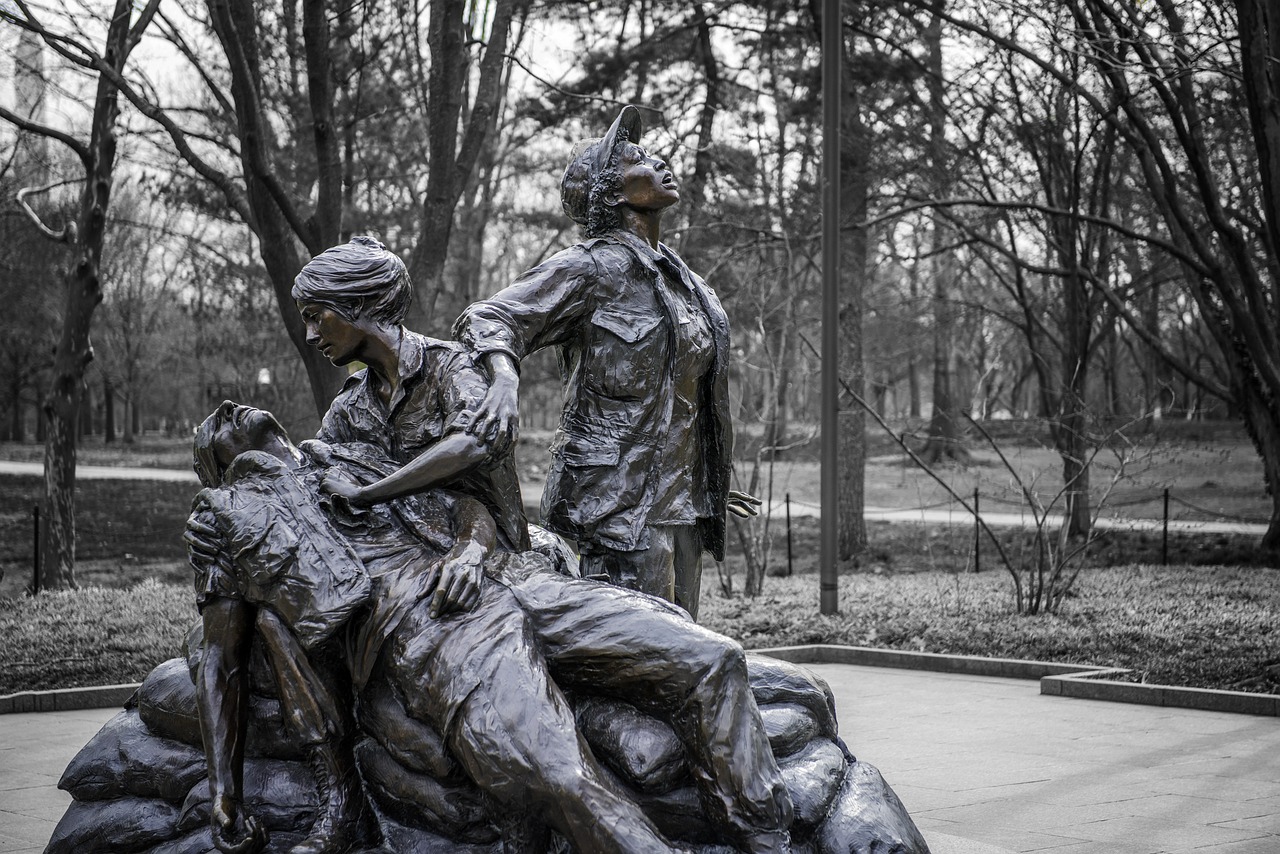
Divided Attention
Divided attention refers to our brain's ability to distribute its focus across multiple tasks or stimuli simultaneously. Imagine trying to juggle several balls at once; the more balls you add, the harder it becomes to keep them all in the air. This is precisely what happens with our cognitive resources when we attempt to multitask. While we might pride ourselves on our ability to handle several things at once, research suggests that divided attention can significantly impair memory formation and retrieval.
When we multitask, our brain is forced to switch back and forth between tasks rather than focusing on one activity deeply. This switching can lead to what psychologists call "task interference," where the quality of our performance on each task suffers. For instance, if you’re trying to study for an exam while scrolling through social media, you're likely to miss important information that could have been encoded into your memory. The brain simply doesn’t have the capacity to fully engage with multiple complex tasks at the same time.
Studies have shown that when individuals engage in divided attention, their ability to recall information later is compromised. This phenomenon occurs because the brain does not effectively encode the information when it is distracted. To illustrate this, consider the following table that summarizes the effects of divided attention on memory performance:
| Task Type | Memory Performance | Notes |
|---|---|---|
| Single Task | High Recall | Deep focus leads to better encoding. |
| Divided Attention | Low Recall | Increased cognitive load reduces memory retention. |
Moreover, divided attention can lead to superficial processing of information, which means that rather than truly understanding or remembering the material, we merely skim the surface. This is akin to reading a book while watching TV; you might catch a few plot points, but you won’t grasp the deeper themes or character development. Consequently, the information is less likely to be stored in long-term memory, making it harder to retrieve later.
To combat the negative effects of divided attention, it’s essential to adopt strategies that promote focused attention. For example, setting aside specific time blocks for studying without distractions can enhance memory retention. Creating a dedicated study environment, free from interruptions, can also help in improving your ability to encode information effectively. In the end, understanding the dynamics of divided attention is crucial for anyone looking to optimize their learning and memory capabilities.
- What is divided attention? Divided attention is the ability to focus on multiple tasks or stimuli simultaneously, which can impair memory performance.
- How does multitasking affect memory? Multitasking can lead to superficial processing of information, resulting in lower recall rates and poorer memory retention.
- What strategies can help improve focus? Techniques such as setting specific study times, minimizing distractions, and creating a conducive learning environment can enhance focus and memory.
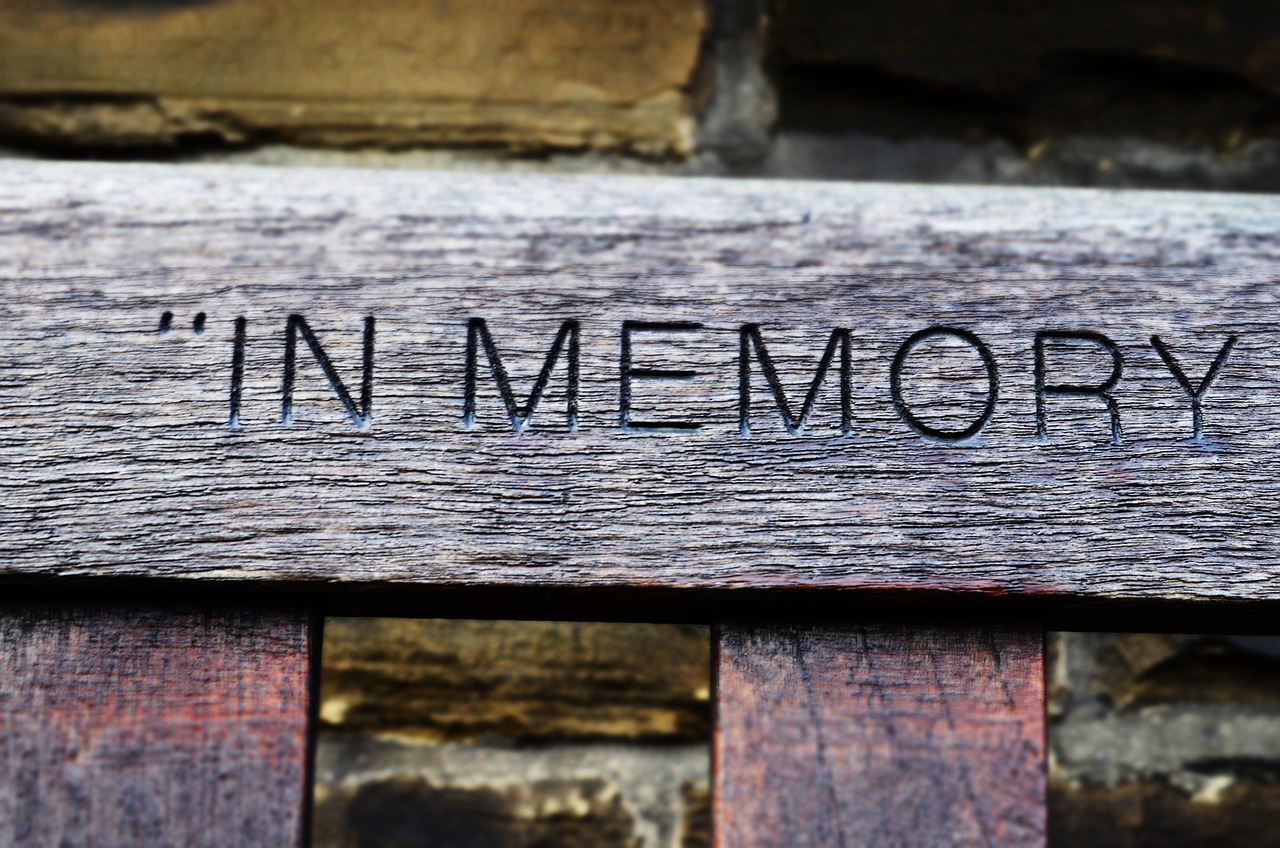
Types of Memory
Memory is not a one-size-fits-all concept; it’s a complex tapestry woven from various types, each serving distinct purposes and functioning in unique ways. At its core, human memory can be broadly categorized into three main types: episodic memory, semantic memory, and procedural memory. Understanding these types can help us grasp how we learn, recall, and even forget information throughout our lives.
Episodic memory is like a personal diary of our experiences. It allows us to recall specific events from our past, complete with the context in which they occurred, such as time and place. For instance, remember your first day at school or that unforgettable vacation? Those vivid recollections are stored in your episodic memory, making it a vital part of our identity and personal history. It’s what gives us a sense of continuity over time, connecting our past with our present.
On the other hand, semantic memory is more about the facts and knowledge we accumulate throughout our lives. Think of it as the encyclopedia of your brain, containing information such as the capital of France or the rules of a game. Unlike episodic memory, semantic memory is not tied to personal experiences; instead, it encompasses the general knowledge that we share with others. This type of memory is crucial for learning and communication, allowing us to make sense of the world around us.
Lastly, we have procedural memory, which is all about skills and actions. This type of memory enables us to perform tasks without conscious thought, such as riding a bike or typing on a keyboard. Have you ever noticed how you can drive a car while having a conversation? That’s procedural memory at work! It’s fascinating how our brain automates certain tasks, freeing up cognitive resources for other activities.
To put it all together, here’s a quick summary of the three types of memory:
| Type of Memory | Description | Examples |
|---|---|---|
| Episodic Memory | Memory of personal experiences and specific events. | First day of school, wedding day, vacation memories. |
| Semantic Memory | General knowledge and facts about the world. | Capital cities, historical dates, language rules. |
| Procedural Memory | Skills and actions performed automatically. | Riding a bike, playing a musical instrument, typing. |
Each type of memory interacts with our consciousness in unique ways, influencing how we learn and retain information. For instance, while episodic memories may evoke strong emotional responses, semantic memories often require a different kind of cognitive engagement. Understanding these distinctions not only enriches our appreciation of memory but also enhances our learning strategies, making us more effective in both academic and personal pursuits.
- What is the difference between episodic and semantic memory?
Episodic memory involves personal experiences and specific events, while semantic memory contains general knowledge and facts that are not tied to personal experiences. - How does procedural memory work?
Procedural memory allows us to perform tasks automatically without conscious effort, relying on learned skills. - Can memory types overlap?
Yes, different types of memory can interact; for example, learning facts (semantic) through personal experiences (episodic).

The Brain's Role in Memory
When we think about memory, it's hard not to marvel at the intricate machinery of the brain that makes it all possible. The brain is not just a static organ; it's a dynamic powerhouse that orchestrates everything from the simplest recollections to the most complex thoughts. At the heart of memory formation and retrieval are specific brain regions, each playing a distinct role in how we remember. The hippocampus, often dubbed the "gateway to memory," is crucial for converting short-term memories into long-term ones. Imagine it as the librarian of your brain, categorizing and storing experiences so you can access them later.
Another key player is the prefrontal cortex, which is responsible for higher-order functions like decision-making and problem-solving. This area helps us organize and manipulate information, allowing us to plan and execute tasks based on our memories. Think of the prefrontal cortex as the executive assistant of your memory system, ensuring that everything runs smoothly and efficiently. Together, these regions form a complex network that underpins our ability to learn, remember, and navigate the world around us.
But it's not just about the physical structure of the brain; it's also about its remarkable ability to adapt. Neuroplasticity is the brain's ability to reorganize itself by forming new neural connections throughout life. This means that our experiences can physically change the brain, enhancing our capacity for memory. For instance, when you learn a new skill, such as playing an instrument, your brain rewires itself to accommodate this new information. It's like remodeling a house; you may change the layout to make it more functional and suited to your needs.
However, not all is well in the realm of memory. Memory disorders, such as Alzheimer's disease and amnesia, provide a sobering glimpse into how brain function can severely impact our ability to remember. Alzheimer's, for instance, is characterized by the deterioration of brain cells, particularly in the hippocampus, leading to significant memory loss. This condition serves as a reminder of the fragile nature of our memory systems and raises important questions about the relationship between brain health and conscious awareness.
To illustrate the connection between different brain regions and their specific roles in memory, consider the following table:
| Brain Region | Function |
|---|---|
| Hippocampus | Essential for memory formation and retrieval |
| Prefrontal Cortex | Involved in decision-making and problem-solving |
| Amygdala | Processes emotions and helps encode emotional memories |
| Cerebellum | Stores procedural memories, such as motor skills |
In summary, the brain plays a pivotal role in memory, acting as both the storage facility and the processing center for our experiences. Understanding these functions can help us appreciate the complexity of memory and its dependence on the brain's intricate architecture. As we delve deeper into the relationship between memory and consciousness, we uncover the remarkable ways in which our brains shape our perceptions, learning, and ultimately, our existence.
- What is the role of the hippocampus in memory?
The hippocampus is critical for forming new memories and connecting them to emotions and senses. - How does neuroplasticity affect memory?
Neuroplasticity allows the brain to adapt and reorganize itself, which is essential for learning and memory retention. - What are common memory disorders?
Common memory disorders include Alzheimer's disease, amnesia, and other forms of dementia that affect memory capabilities. - Can memory improve with age?
While some aspects of memory may decline with age, neuroplasticity can allow for improvement in certain areas, especially with practice and learning.

Neuroplasticity
Neuroplasticity, often hailed as one of the most fascinating features of the human brain, refers to its remarkable ability to reorganize itself by forming new neural connections throughout life. Imagine your brain as a bustling city, where the roads are the neural pathways. Over time, as you learn new things, some roads may become busier, while others may fall into disrepair. This constant reshaping allows us to adapt to new experiences, learn new skills, and recover from injuries. It’s like having a personal GPS that reroutes you whenever you encounter a roadblock!
At its core, neuroplasticity is the brain's response to learning and experience. When you engage in a new activity, whether it's playing a musical instrument or mastering a new language, your brain is busy building new connections. This is particularly evident in children, whose brains are incredibly adaptable. However, it’s important to note that neuroplasticity is not just a childhood phenomenon; adults can also harness this ability, proving that it’s never too late to learn something new.
Research has shown that neuroplasticity can be categorized into two main types:
- Functional plasticity: This type refers to the brain's ability to move functions from damaged areas to undamaged areas. Think of it as a backup generator that kicks in when the main power source fails.
- Structural plasticity: This involves the brain's ability to physically change its structure in response to learning or experience, akin to a construction crew building new roads and bridges to improve traffic flow.
Moreover, neuroplasticity is influenced by various factors, including age, environment, and the nature of the experience. For instance, engaging in regular physical exercise has been shown to enhance neuroplasticity, as it increases blood flow to the brain and promotes the growth of new neurons. Similarly, mindfulness practices like meditation can strengthen neural connections, leading to improved focus and emotional regulation.
However, it's essential to understand that while neuroplasticity offers incredible potential, it also comes with its challenges. Negative experiences, such as trauma or chronic stress, can lead to maladaptive changes in the brain, reinforcing harmful patterns of thought and behavior. This highlights the importance of nurturing a positive environment and engaging in healthy practices that promote beneficial neuroplastic changes.
In summary, neuroplasticity is a powerful testament to the brain's adaptability and resilience. By understanding and leveraging this incredible capacity, we can enhance our learning processes, recover from setbacks, and ultimately lead more fulfilling lives. So, whether you're picking up a new hobby or striving to improve your mental health, remember that your brain is always ready to grow and change, just like you!
- What is neuroplasticity? Neuroplasticity is the brain's ability to reorganize itself by forming new neural connections in response to learning and experience.
- Can adults experience neuroplasticity? Yes, adults can experience neuroplasticity, allowing them to learn new skills and adapt to changes throughout their lives.
- How does exercise affect neuroplasticity? Regular physical exercise enhances neuroplasticity by increasing blood flow to the brain and promoting the growth of new neurons.
- Can negative experiences impact neuroplasticity? Yes, negative experiences such as trauma can lead to maladaptive changes in the brain, reinforcing harmful patterns of thought and behavior.

Memory Disorders
Memory disorders are fascinating yet challenging conditions that reveal much about the intricate workings of the human brain and its relationship with consciousness. They can manifest in various forms, affecting the way individuals recall information, recognize familiar faces, or even remember to perform daily tasks. Some of the most well-known memory disorders include Alzheimer's disease, amnesia, and dementia. Each of these disorders provides valuable insights into how our memory systems operate and the significant role that brain health plays in our cognitive functions.
Alzheimer's disease, for instance, is a progressive neurological disorder that primarily affects older adults. It leads to the degeneration of brain cells, resulting in severe memory loss, confusion, and changes in behavior. What makes Alzheimer's particularly alarming is its gradual onset; individuals may initially struggle with short-term memory, forgetting recent conversations or misplacing items. As the disease progresses, they may lose the ability to recognize loved ones or recall significant life events. This deterioration not only impacts the individual but also profoundly affects their families and caregivers, who must navigate the emotional and practical challenges that arise.
Amnesia, on the other hand, is often characterized by a sudden loss of memory, which can be caused by traumatic events, brain injuries, or psychological factors. There are different types of amnesia, such as anterograde amnesia, where individuals cannot form new memories after the event that caused the amnesia, and retrograde amnesia, where they lose memories formed before the incident. Imagine waking up one day and not being able to remember your own name or the faces of your loved ones; this is the reality for many who suffer from this condition, highlighting the fragility of our memory systems.
In addition to these disorders, dementia encompasses a broader category of cognitive impairments that significantly impact memory and daily functioning. It is not a specific disease but rather a term that describes a range of symptoms affecting memory, thinking, and social abilities. Dementia can stem from various causes, including vascular issues, Lewy body disease, and frontotemporal degeneration. Individuals with dementia may experience confusion, difficulty with language, and challenges in problem-solving, which can lead to a diminished quality of life.
| Memory Disorder | Characteristics | Causes |
|---|---|---|
| Alzheimer's Disease | Progressive memory loss, confusion, personality changes | Genetic factors, age, environmental influences |
| Amnesia | Inability to form new memories or recall past events | Trauma, brain injury, psychological factors |
| Dementia | Decline in cognitive abilities, memory loss, impaired reasoning | Vascular issues, neurodegenerative diseases |
Understanding these memory disorders is crucial, not only for those who are affected but also for their families and healthcare providers. By recognizing the symptoms and seeking early intervention, it is possible to improve the quality of life for those impacted. Furthermore, research into these disorders continues to evolve, shedding light on potential treatments and interventions that can slow the progression of memory loss and enhance cognitive function.
In conclusion, memory disorders serve as a poignant reminder of the importance of brain health and the complexities of human memory. They challenge our understanding of consciousness and highlight the delicate balance between our experiences and the neural pathways that support them. As we continue to explore the depths of memory disorders, we can hope for advancements that will not only help those affected but also deepen our understanding of the human mind.
- What are the early signs of Alzheimer's disease? Early signs may include memory loss, difficulty completing familiar tasks, and changes in mood or personality.
- Can memory disorders be cured? While some memory disorders can be managed or treated, many, like Alzheimer's, currently have no cure.
- How can one improve memory function? Engaging in mental exercises, maintaining a healthy diet, and ensuring adequate sleep can help improve memory.
- Is there a link between stress and memory disorders? Yes, chronic stress can negatively impact memory and may contribute to the development of memory disorders.

Implications for Learning
Understanding the intricate relationship between memory and consciousness is not just an academic exercise; it has profound implications for how we learn and retain information. When we grasp how these two elements interact, we can significantly enhance our educational strategies. Imagine trying to build a house without knowing the strength of the materials; similarly, educators and learners can benefit immensely from understanding the dynamics of memory and consciousness.
One of the most crucial aspects of this relationship is the role of attention. When we focus our attention on a specific task, we are more likely to encode that information into our memory effectively. This is where techniques like mnemonic devices come into play. By linking new information to something familiar, we create mental shortcuts that enhance recall. For instance, using acronyms or rhymes can transform a daunting list of facts into something more manageable and memorable.
Moreover, the implications extend beyond mere memorization. Educational strategies that incorporate an understanding of memory can lead to improved retention techniques. For example, spaced repetition is a method that involves reviewing information at gradually increasing intervals. This technique takes advantage of how our memory works, allowing us to strengthen neural connections over time. Think of it as watering a plant; if you give it just the right amount of water at the right intervals, it flourishes. The same principle applies to learning.
Additionally, the environment in which we learn can significantly impact our memory performance. Factors such as noise, lighting, and even temperature can either enhance or impede our ability to focus and retain information. Creating an optimal learning environment is akin to setting the stage for a play; the right ambiance can make all the difference in the performance. For instance, a quiet, well-lit space can facilitate better concentration, leading to more effective learning experiences.
Furthermore, it's essential to recognize the impact of sleep on memory consolidation. Sleep is not just a time for our bodies to rest; it is a critical period for our brains to process and organize the information we’ve learned throughout the day. Without adequate sleep, our ability to retain and recall information diminishes. Thus, encouraging good sleep hygiene can be as vital as teaching study techniques. Think of sleep as the maintenance crew that keeps the memory warehouse organized and efficient.
In conclusion, the implications of understanding memory and consciousness for learning are vast. By leveraging attention, utilizing effective memory techniques, creating conducive learning environments, and prioritizing sleep, we can significantly enhance our educational outcomes. The interplay of these elements can transform the learning experience, making it not only more effective but also more enjoyable.
- How does attention affect memory? Attention plays a critical role in determining what information is encoded into memory. The more focused we are, the better we can remember.
- What are some effective memory techniques? Techniques like mnemonic devices, spaced repetition, and visualization can significantly enhance memory retention.
- Why is sleep important for memory? Sleep is essential for memory consolidation, allowing our brains to process and organize information learned throughout the day.
- Can the learning environment impact memory? Yes, factors such as noise and lighting can influence our ability to concentrate and retain information.
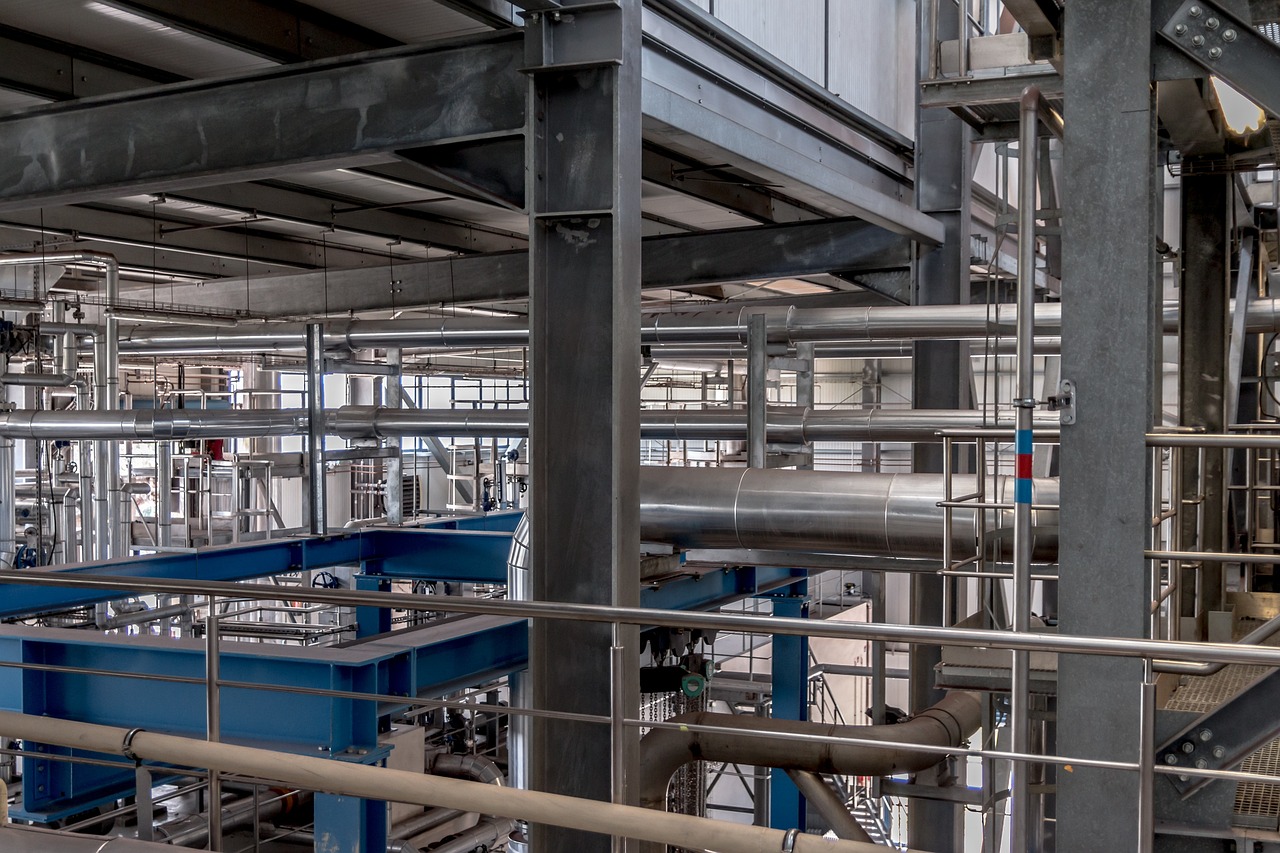
Memory Techniques
When it comes to enhancing our memory, understanding effective can be a game changer. These strategies not only help us retain information but also make the learning process more enjoyable. Imagine trying to remember a grocery list or a set of important dates; without a solid technique, it can feel like trying to catch water with your bare hands. So, what are some of the best methods out there? Let's dive into a few that stand out.
One widely used technique is the method of loci, also known as the memory palace. This ancient strategy involves visualizing a familiar place, like your home, and associating each item you want to remember with a specific location within that space. For instance, if you need to remember to buy eggs, you might picture them sitting on your living room couch. This method leverages our spatial memory, making recall easier and more intuitive.
Another effective technique is the use of mnemonic devices. These are simple phrases or acronyms that help you remember more complex information. For example, to remember the order of operations in math (Parentheses, Exponents, Multiplication, Division, Addition, Subtraction), you might use the phrase "Please Excuse My Dear Aunt Sally." By creating a fun or quirky association, you can turn mundane information into something memorable.
Additionally, spaced repetition is a technique that emphasizes the timing of your review sessions. Instead of cramming all at once, you spread out your study sessions over time. Research shows that this method significantly boosts retention. For instance, if you're learning a new language, reviewing vocabulary words at increasing intervals (like one day, then three days later, then a week later) helps reinforce the information in your long-term memory.
Finally, don't underestimate the power of visualization. Creating mental images of the information you want to remember can make a huge difference. For example, if you're trying to memorize a historical event, picture the scene vividly in your mind. The more detailed and colorful the image, the better your chances of recalling it later. This technique taps into the brain's natural affinity for visual stimuli, making it easier to access the information when needed.
In summary, employing these memory techniques can transform the way we learn and retain information. By utilizing methods like the memory palace, mnemonic devices, spaced repetition, and visualization, we can enhance our cognitive abilities and make learning a more engaging experience. Remember, the key to effective memory lies not just in hard work but in smart strategies!
- What is the best memory technique for students?
While different techniques work for different people, many students find that spaced repetition combined with mnemonic devices is particularly effective for studying.
- How can I improve my memory quickly?
Incorporating techniques like visualization and the method of loci can yield quick improvements, especially when practiced regularly.
- Are there any dietary tips for better memory?
Yes! Foods rich in omega-3 fatty acids, antioxidants, and vitamins can support brain health and improve memory function.

Impact of Sleep on Memory
When we think about memory, we often focus on our mental processes during waking hours, but what happens when we close our eyes and drift off into the realm of dreams? Sleep is not just a passive state; it's a dynamic process that plays a crucial role in consolidating our memories. Imagine your brain as a busy librarian, sorting through a mountain of books (your experiences) every night. Without adequate sleep, this librarian struggles to organize and file away the information, leading to confusion and forgetfulness. So, how does sleep actually impact memory?
Research has shown that sleep enhances our ability to retain and recall information. During different stages of sleep, particularly during REM (Rapid Eye Movement) sleep, our brains are busy processing and integrating new information gathered throughout the day. This stage of sleep is like a magical workshop where our experiences are transformed into lasting memories. Not only does REM sleep help in consolidating memories, but it also aids in problem-solving and creativity, allowing us to make connections between seemingly unrelated concepts.
Moreover, sleep deprivation can have detrimental effects on memory. When we don't get enough rest, our cognitive functions suffer. Studies indicate that lack of sleep can lead to:
- Impaired Attention: Difficulty focusing on tasks can hinder the encoding of new information.
- Reduced Retention: Information learned is less likely to be stored effectively.
- Increased Forgetfulness: The ability to recall past experiences diminishes significantly.
To illustrate the impact of sleep on memory, consider the following table that summarizes the effects of various sleep durations on memory performance:
| Sleep Duration | Memory Performance |
|---|---|
| Less than 4 hours | Severe impairment in memory retention and recall |
| 4-6 hours | Moderate impairment; difficulty focusing and recalling information |
| 6-8 hours | Optimal performance; improved memory consolidation and recall |
| More than 8 hours | Potential diminishing returns; excessive sleep may lead to grogginess |
In essence, prioritizing sleep is crucial for anyone looking to enhance their memory capabilities. Just like a computer needs to reboot to function efficiently, our brains require adequate sleep to refresh and optimize memory processes. So, the next time you think about cramming for an exam or working late into the night, remember that a good night's sleep might be your best study partner!
- How much sleep do I need for optimal memory function?
Most adults need between 7 to 9 hours of sleep each night for optimal cognitive function, including memory consolidation.
- Can napping improve memory?
Yes, short naps (20-30 minutes) can enhance memory recall and boost cognitive performance, especially if you are sleep-deprived.
- What are some tips for improving sleep quality?
Establishing a regular sleep schedule, creating a calming bedtime routine, and minimizing screen time before bed can significantly improve sleep quality.
Frequently Asked Questions
- What is the difference between short-term and long-term memory?
Short-term memory is like a temporary holding area for information, allowing us to retain data for a brief period—usually seconds to minutes. Long-term memory, on the other hand, is where we store information for extended periods, potentially for a lifetime. Think of short-term memory as a chalkboard that can be wiped clean, while long-term memory is more like a library filled with books that we can revisit anytime.
- How does consciousness affect memory formation?
Consciousness plays a pivotal role in how we encode and retrieve memories. When we are consciously aware and focused on a task, we are more likely to form lasting memories. It’s like turning the spotlight on in a dark room; the things in the light are what we remember best. If our attention is divided or distracted, memory formation can suffer, leading to gaps in our recall.
- What is selective attention and why is it important?
Selective attention is our ability to focus on specific stimuli while ignoring others. Imagine trying to listen to a friend at a noisy party; you filter out the background chatter to concentrate on their voice. This ability is crucial for memory because it helps us encode only the most relevant information, enhancing our recall later.
- Can multitasking affect my memory?
Absolutely! Multitasking can be detrimental to memory formation. When we try to juggle multiple tasks at once, we often process information superficially, which leads to weaker memory retention. It’s like trying to fill several buckets with water at the same time—none of them get filled properly.
- What are the different types of memory?
Memory can be categorized into several types, including episodic (personal experiences), semantic (facts and knowledge), and procedural (skills and tasks). Each type serves a unique purpose, and understanding these categories can help us leverage them for better learning and retention.
- How does the brain contribute to memory?
The brain is the command center for memory, with specific regions like the hippocampus and prefrontal cortex playing crucial roles in memory formation and retrieval. These areas work together, much like a well-coordinated team, to help us store and recall information effectively.
- What is neuroplasticity?
Neuroplasticity refers to the brain's remarkable ability to reorganize itself by forming new neural connections. This adaptability is key for learning and memory, allowing us to adjust and improve our cognitive functions over time. It’s like a garden that can grow new plants even after a storm.
- What are some common memory disorders?
Memory disorders, such as Alzheimer’s disease and amnesia, can significantly impact our ability to remember. These conditions highlight the delicate relationship between brain function and memory capabilities, underscoring how vital our brain health is for maintaining consciousness and memory.
- How can understanding memory improve learning?
By understanding the connection between memory and consciousness, educators can develop more effective teaching strategies. Techniques like mnemonic devices and spaced repetition can enhance learning outcomes, making it easier for students to retain information—like planting seeds in fertile soil for a bountiful harvest.
- What role does sleep play in memory?
Sleep is essential for memory consolidation, the process where short-term memories are transformed into long-term ones. A good night’s sleep helps clear the brain’s cache, allowing us to process and store information more effectively. Think of sleep as a nightly maintenance routine for your brain, ensuring everything is in tip-top shape for the next day.

